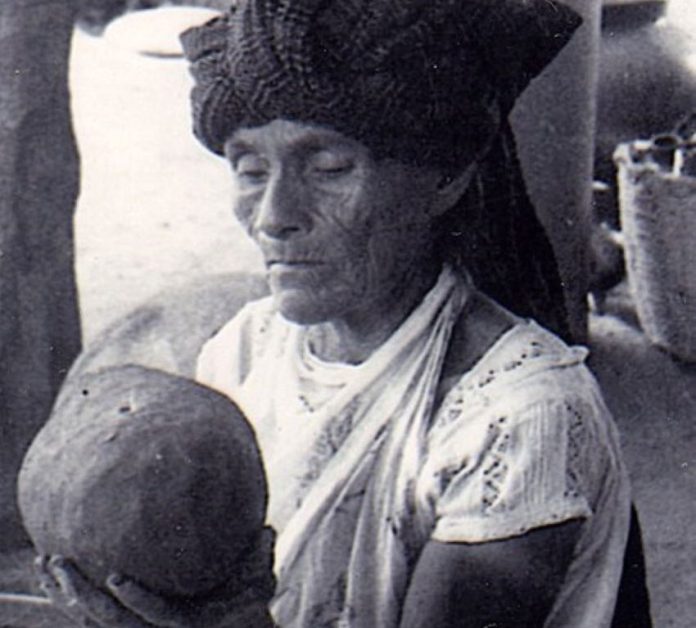Mexico’s handcrafts are folk art in the truest sense of the word. Influenced by changes going on around them, ordinary people living and working outside of vaunted artistic circles reinterpret culture and traditions that can be millennia old. Sometimes that innovator is even “just a housewife.”
San Bartolo Coyotepec is a pottery town located in the Central Valleys of Oaxaca — three valleys that join together at the state capital. The state has a strong international reputation for handcrafts and indigenous cultures, but San Bartolo’s barro negro (black clay) more than holds its own here.
Barro negro pottery has been important economically and culturally in San Bartolo for centuries, with examples found in various local archaeological sites. The local clay had been used primarily to make storage containers, particularly for liquids such as water and mezcal. Such containers are still made from small monkey-shaped bottles with cork or corn-cob stoppers to giant lidded amphoras called tibors.
Barro negro clay has some unique properties. Fired containers are impermeable and resistant to knocks, which made them highly suited for storage and transport. The color was always a matte gray — not very aesthetic, but it made a pleasant ringing sound, making it suitable at times as a musical instrument.
Because of the rise of mass-produced, cheaper and much lighter containers, barro negro might have disappeared from San Bartolo if it weren’t for the ingenuity of one woman with good timing.

Born Rosa Real Mateo (with “de Nieto” added after marriage), she is known simply as Doña Rosa, one of many traditional women living and working in the home here, including working with clay. Sometime in the 1950s, she discovered on her own that if she rubbed a nearly dry piece of barro negro clay with a smooth stone before firing, the result was a shiny black instead of a dull gray finish.
What she (re)discovered was a very old technique called burnishing, which other Mesoamerican pottery makers had used to give a shine to their wares. It is likely that someone discovered the same thing earlier, but burnishing this particular clay has its downsides.
Burnished barro negro is more fragile and porous, meaning that although the jars look a lot nicer, they cannot be used for liquid or food.
Then, in the mid-20th century, Oaxaca began to share in Mexico’s booming tourism industry. But instead of focusing on its hard-to-get-to beaches, Oaxaca promoted its indigenous and traditional cultures, which includes a wide variety of handcrafts. This meant that many of them would not disappear, but the demand for decorative items meant that they would change, sometimes drastically.
Doña Rosa’s experiments fit with this new market for visitors wanting to take a piece of Oaxaca home with them.
Doña Rosa not only made the pottery shiny, she had artistic talent as well. In her book Mexican Folk Art: From Oaxacan Artist Families, Arden Rothstein recounts having the privilege of seeing Doña Rosa at work in the 1960s, an experience she calls “unforgettable.”
“Despite her diminutive size, she earned renown for her expertise in creating beautiful forms and applying [a] quartz [stone] to the clay before firing,” she said.
Doña Rosa died in 1980 after a long life, but not before her workshop became a mecca for famous admirers such as Nelson Rockefeller and former American president Jimmy Carter. Her work recreated the town’s pottery industry, which now boasts over 300 workshops dedicated just to barro negro.
Doña Rosa’s family still runs her workshop. It is located off the main road, but there is a large sign indicating the turnoff as you enter on the highway from the city of Oaxaca. It has one of the largest selections of decorative items in a wide range of styles, from traditional motifs to the modern. Different family members specialize in different kinds of pieces, but they do not sign their work, selling everything collectively. However, if you ask who made a specific piece, they can tell you.
Decorative objects are the lifeblood of the town, but some creators have taken barro negro into the realm of art. The other important ceramic family in town is the Pedros, headed by notable artist Carlomagno Pedro.
His workshop is quite humble, but his work is anything but. His education in pottery was begun by his parents, but he also took artistic training at the Tamayo Museum in the city of Oaxaca. The extra education is evident in his designs, many of which are one of a kind. He does everything from miniatures to full wall murals, such as the one at the Oaxaca Baseball Academy. His work has been exhibited as both art and handcraft in Mexico and abroad, and his fame led to becoming the director of MEAPO, Oaxaca’s state-sponsored handcraft museum in San Bartolo.
The Doña Rosa and Pedro families dominate barro negro pottery, with dozens of them becoming notable in their own right. However, there are others, especially up-and-coming artisans, worth checking out.

One of these is Abdiel Cardozo Calderón, who can be reached at abixmas_007@hotmail.com. Most of his work is related to his Zapotec heritage but reinterpreted as works of art, not folklore. For almost a decade, his work has been recognized and promoted by the New York-based Friends of Oaxacan Folk Art, whose website is a valuable resource for background and contact information about outstanding barro negro and other Oaxacan artisans.
Leigh Thelmadatter arrived in Mexico 17 years ago and fell in love with the land and the culture. She publishes a blog called Creative Hands of Mexico and her first book, Mexican Cartonería: Paper, Paste and Fiesta, was published last year. Her culture blog appears regularly on Mexico News Daily.
